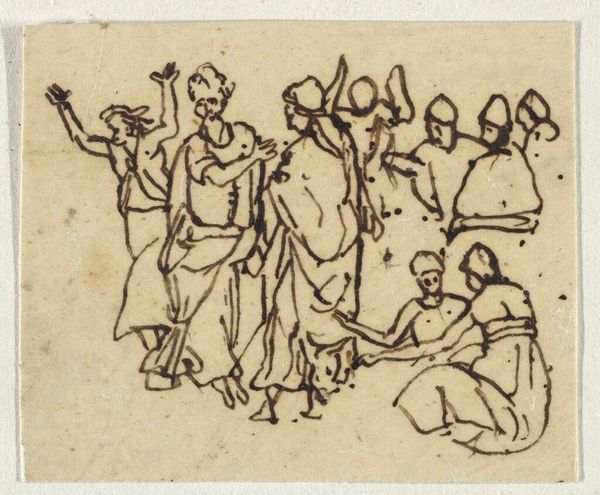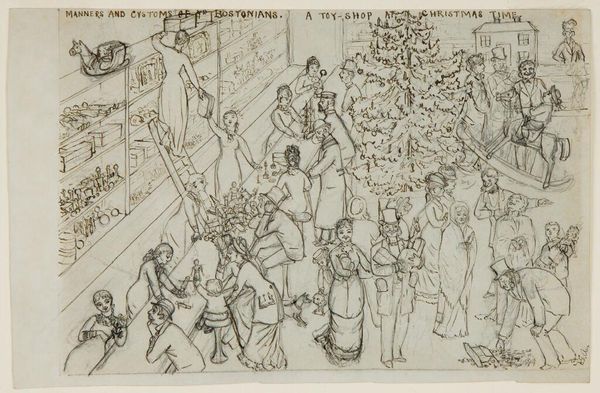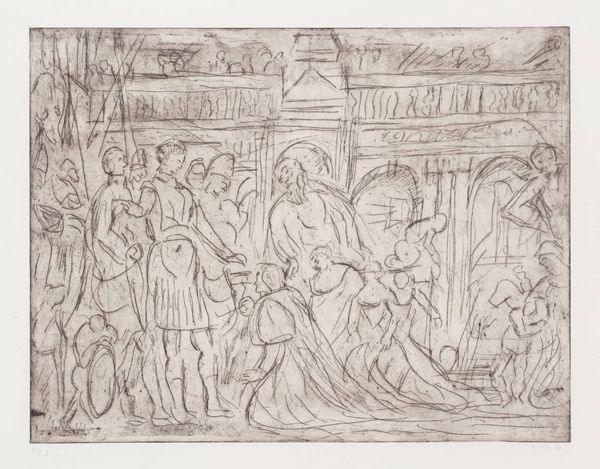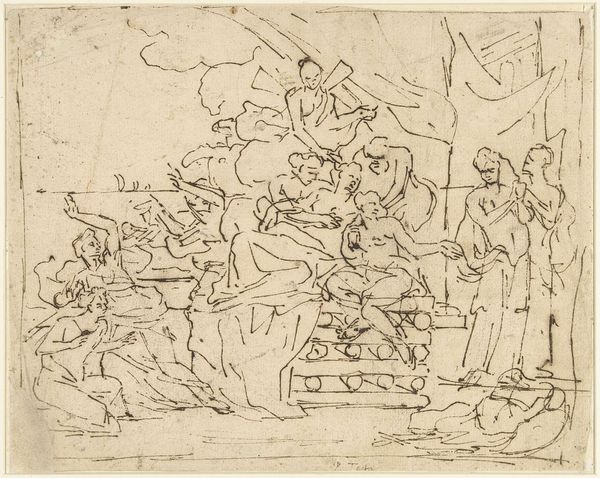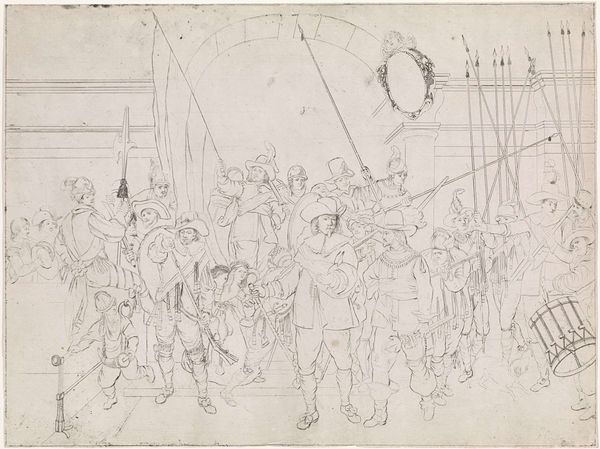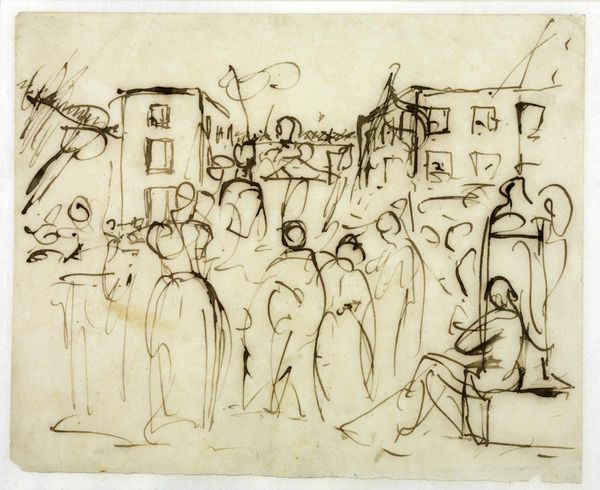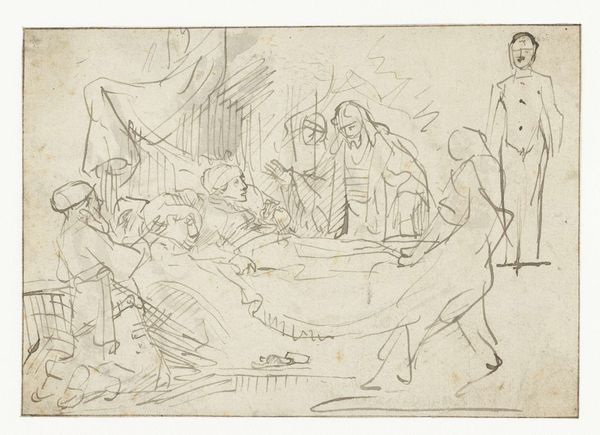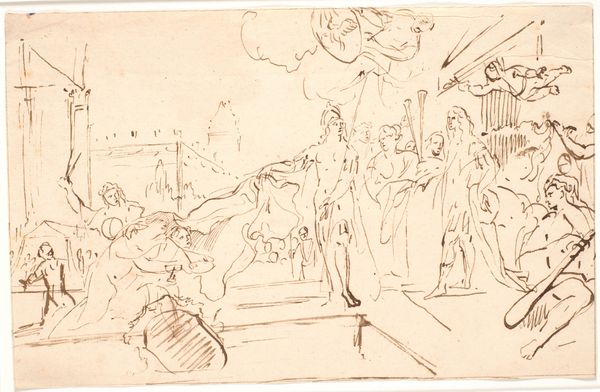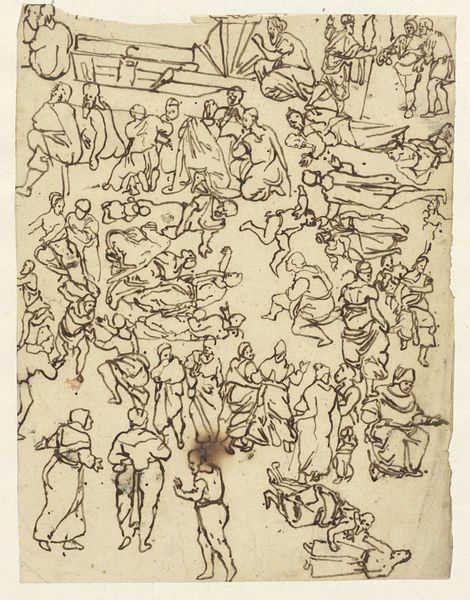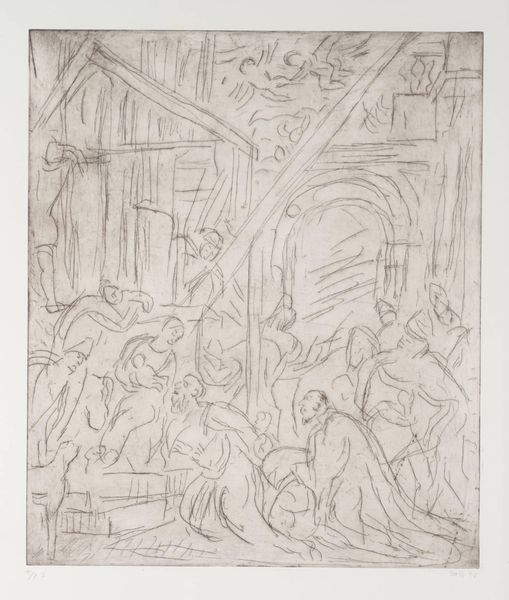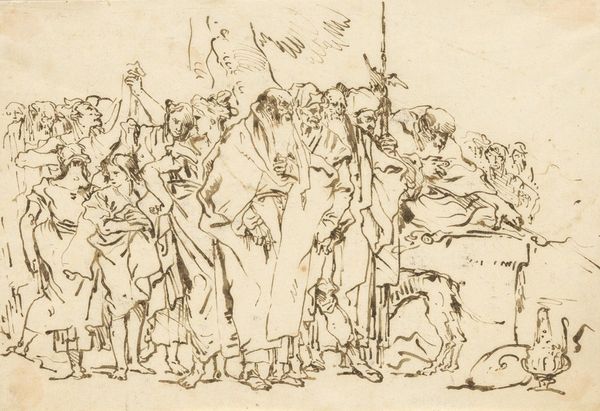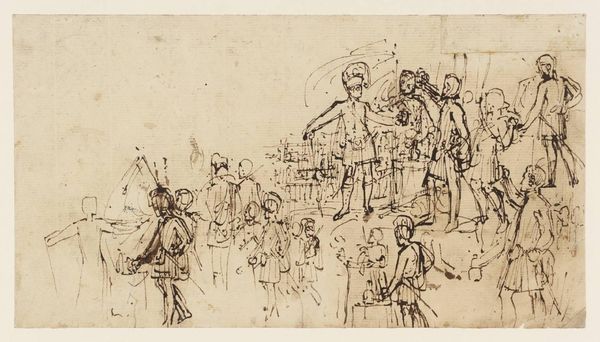
drawing, ink
#
drawing
#
narrative-art
#
pen sketch
#
german-expressionism
#
figuration
#
ink
#
expressionism
#
line
#
genre-painting
Copyright: Public Domain: Artvee
Curator: Ernst Ludwig Kirchner created this ink drawing, "Bauerntanz in der Sennhütte," in 1920. It depicts a peasant dance within an Alpine hut. Editor: Wow, it feels like I’m peeking into a hidden, joyous moment. There’s so much movement, a raw kind of energy jumping off the page. Like catching a glimpse of something illicit and freeing. Curator: Kirchner was deeply invested in depicting modern life, but often with a critical eye. The art historical lens sees this drawing in relation to his broader engagement with themes of community, tradition, and escapism from the anxieties of post-war Germany. It shows us the idealization of rural life common at the time. Editor: An "idealization"... Maybe. I get the theory. But looking at these scratchy lines, these figures that almost dissolve into the background – there’s an anxious energy, not serenity. More like desperately trying to hold onto something vanishing. The figures look like shadows, not real people. Curator: I think your read hits on the tension inherent to Kirchner's Expressionism. It aimed to capture emotional truth, but through subjective experience. His use of line and form—his deliberate "primitivism," as it was sometimes called—served not just an aesthetic purpose but also a social one. It questioned established artistic conventions, attempting to dismantle traditional representations in favor of expressing an inner psychological landscape. Editor: Psychological landscape, right! It’s like the party is a symptom. Not a solution, to, as you said, "post-war anxiety", more like everyone is just drunk to numb the feeling, you know? Trying to drown the ghosts with folksy traditions. A bunch of people going through the motions. Curator: Considering that this piece followed a period of intense trauma for Kirchner—his experiences during World War I, and his subsequent struggles with mental health— your read rings true. This work can be seen as engaging in the cultural conversations around trauma, memory, and the search for stability, which became very pressing for people at the time. Editor: Exactly. So what looked, at first, like just some rough sketch of happy hillbillies ends up a mirror of its time, showing everyone desperately trying to forget what haunts them by dancing. Curator: Well, maybe not everyone—but it gives us something to consider in understanding this piece. Editor: And gives us the chance to realize, it ain't new...it’s been going on ever since we could bang two rocks together to get away from a feeling.
Comments
No comments
Be the first to comment and join the conversation on the ultimate creative platform.
